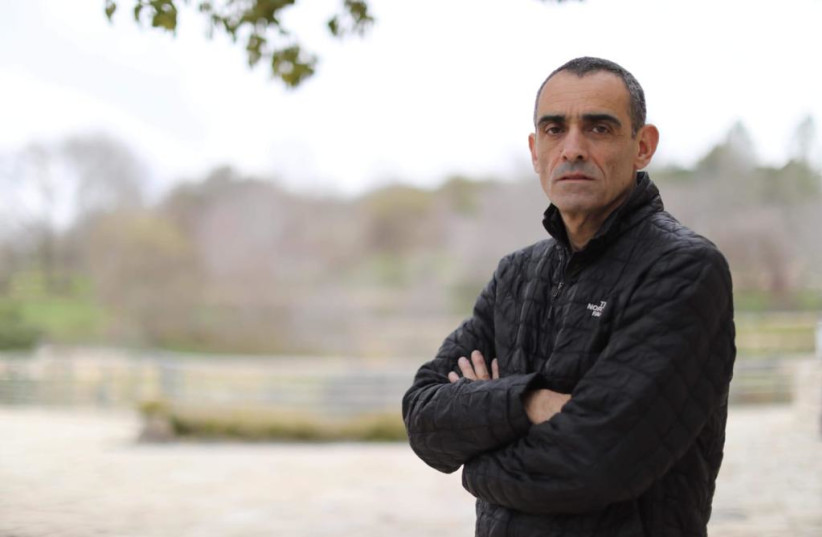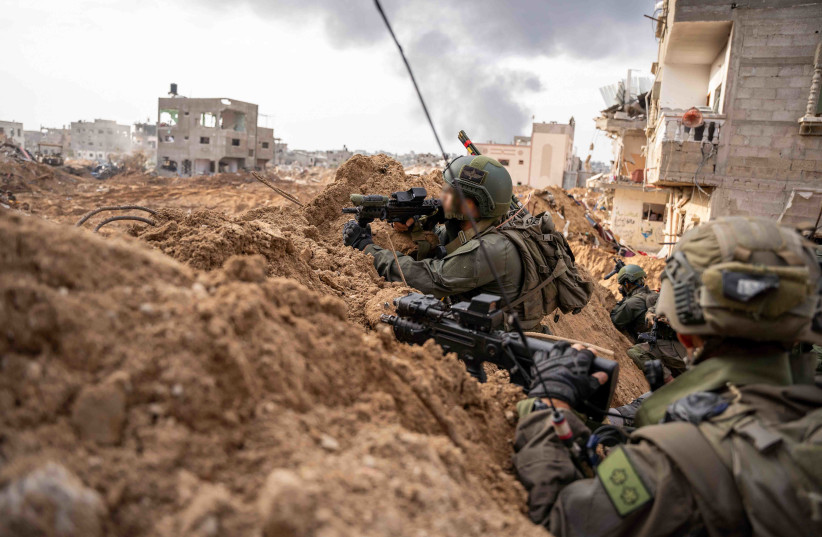What will Israel’s presence in Gaza look like after war? Ex-intel head explains
Israeli government officials have been making more and more noise about maintaining a security zone in Gaza even after the future withdrawal of most forces, but no one has discussed the elements of what this zone would look like and how it would operate.
Former Shin Bet head of the counterterrorism division for Jerusalem, Judea and Samaria Arik “Harris” Barbing interviewed with the Jerusalem Post on Thursday to set out some early principles for how to handle the fraught idea of a Gaza border security zone.
First, Barbing, who was also a Shin Bet cyber chief and currently does cyber and intelligence consulting in the private sector, warned that no one should jump the gun and that Israel is months, if not years, from being able to withdraw its main forces from the heart of Gaza back to a border security zone.
But in the distant future, he said that there will still need to be “pathways where the IDF can act to stop terrorists from moving around the area.”
Israel cannot be static, ex Shin Bet official warns
The former top Shin Bet official cautioned that “if we are more static, they can attack us more easily. So, how do we address this operationally? We move out of the center and closer to the border.”

“The perimeter needs to be significant, between a kilometer to one-and-a-half kilometers,” he said, clarifying that there would no longer be able to be Gaza housing in that area.
A security demand he said was necessary, which could be controversial in the eyes of Egypt, the US, and the international community, was that Israeli forces would need to monitor the Philadelphia Corridor, which the IDF withdrew from in 2005.
He recognized that this would need to be coordinated with Egypt.
However, the perimeter idea is more complex than that because if parts of Gaza stretch to around five kilometers wide, parts are as narrow as around two kilometers.
Not only that, parts of Gaza City in northern Gaza go right up to the border.
If in southern Gaza a larger security zone might be more possible, in parts of northern Gaza, Barbing recognized that the security zone would need to be much smaller in order to leave room for Palestinians to live.
Part of the solution may be staged to where the perimeter is. He estimated that rebuilding parts of Gaza would take far more than three years, both in terms of the extent of the destruction and in terms of the complex process for raising money.
This could mean that at the stage where northern neighborhoods are not yet rebuilt, the security zones could be larger while shrinking somewhat later.
How would Barbing cope with shrunken security zones?
He said that while it might not be politically correct to say, there might be some Israeli Gaza corridor communities that would not be able to return.
In other words, many areas would have enough space for a kilometer or more of a security zone within Gaza’s territory, but in areas where Gaza is too narrow, the security zone would need to extend into Israeli territory.
Barbing said that having a larger security zone was critical enough to make that sacrifice in some areas, as long as in other areas, Israelis could return to the corridor.
Regarding fishing, Barbing said that Gaza would not be able to have any maritime activity in the near future, though fishing has been a key part of Gaza’s economy.
The former senior Shin Bet officials said that an early priority would be to get large public institutions like hospitals back up and running, with residential housing coming at a later stage.
It was implied that part of the complexity of rebuilding would be security procedures for ensuring that rebuilding materials were only used for authorized civilian projects and would not be siphoned off, as in the past, to build terror tunnels.
As all of this rebuilding would take place, he said it would be critical for there to be constant surveillance within Gaza air space by Israeli aircraft and drones.

Moreover, he said that Israeli commandos would need to have freedom of action to go back deeper into Gaza to hunt for terrorists and prevent establishing new terror infrastructure at any time.
In addition, he said that there would need to be a constant heavier presence of tanks and artillery on the border to project power and for use in targeted counter-terror operations as necessary.
Most important, Barbing said, was that if there was any fighting, it should take place between IDF forces and terrorists within Gaza and not in Israeli territory near Israeli civilians as occurred on October 7.
In terms of what forces should be in place on the border to block any rerun of Hamas’s 3,000-strong invasion, he said top IDF officials should decide this but that it was just as important to establish better technological surveillance and human spy networks.
Barbing said this could take significant time and investment.
Shin Bet’s human spying recruitment efforts in Gaza
One issue that may be weighed may be returning IDF Unit 504 (the IDF’s Mossad) to Gaza to support Shin Bet human spying recruitment efforts.
According to the former senior Shin Bet official, it is not clear that just bringing in more agencies and recruiters will get better intelligence on future Gaza threats, as the more important question is the quality of the recruits.
He did add that “sometimes there are opportunities because of the current chaos” to find better recruits, but there is no simple formula, and recruiting takes time.





Comments are closed.